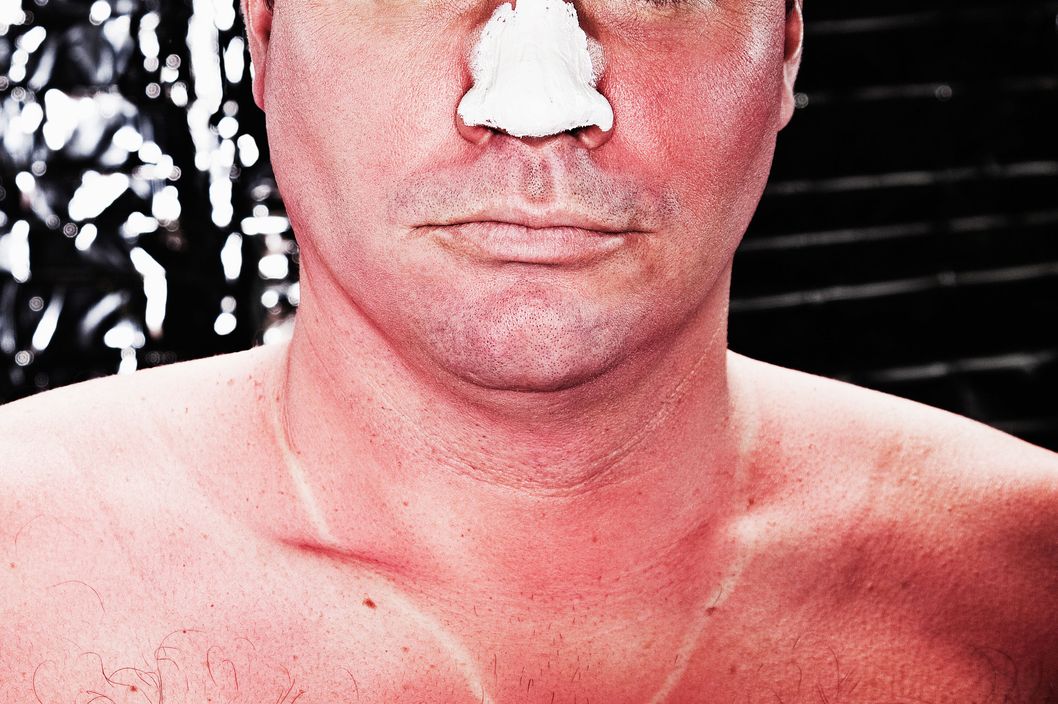 Pinterest icon
Pinterest icon
During a recent beach trip, I experienced a sunburn on my back so bad I considered taking myself to the ER. When the pain finally subsided days later and all of the skin on my back began to peel, I started picking at it. It became an addictive game: No matter where I was, if I found myself in front of a mirror, I would try to see if I could peel off a bigger piece of skin than before. It didn’t matter that the picking was making my back even redder because I was peeling it raw — I couldn’t get enough of the sensation. I felt silly for engaging in what seemed like very primitive behavior, since it reminded me of peeling glue off my hands as a child, but I just couldn’t stop myself.
I know I’m not the only one who does this. And now that we’re passed Memorial Day, signaling the unofficial start of summer, it’s a natural time to ask a question: Despite the fact that it’s painful — not to mention embarrassing — why do some people find it so addictive to peel their skin?
The short answer is that researchers aren’t sure, and they don’t think there’s any one explanation that can explain exactly why skin picking can be addictive for so many people. “There is quite a bit of theory out there, but no silver bullet,” said Matt Traube, a psychotherapist focused on so-called body-focused repetitive disorders (which also include things like pulling out your hair or biting your nails). “It can just be a desire to remove impurities, like popping a zit. For some it’s an obsessive-compulsive habit, others it is a coping mechanism, and some even argue that it can have a genetic quality.”
Researchers think that skin peeling is tied to other body-focused repetitive behaviors. At the core level, said Mohammad Jafferany, a psychiatrist who specializes in skin peeling, “It gives you a release of endorphins. Body-focused repetitive behaviors are addictive, giving the person some sense of relief in some way.”
This is all just informed speculation, though. According to Katlein França, vice-president of Association for Psychoneurocutaneous Medicine of North America, there have been no formal studies done specifically on why skin picking gives people pleasure and why people find both this behavior and its cousins so addictive. Part of the reason for the research gap is that psychodermatology — a field that, as the name implies, focuses on the point where dermatology and psychology overlap — is a relatively new area of research, and one the psychology establishment has only started to take seriously fairly recently. While a small subset of dermatologists and psychologists have been studying it for a while, the definitive book on the subject, Skin Deep: A Mind/Body Program for Healthy Skin, was published in 1986, and the field has received only intermittent publicity in the almost three decades since then.
That’s finally changing, though: In 2013 skin picking was added to the Diagnostic and Statistical Manual of Mental Disorders, the official, comprehensive “bible” of clinical psychology. The American Psychological Association also seems to have given psychodermatology its blessing as well, with a cover story about the field in its February 2015 Monitor of Psychology. The article states that while most medical schools don’t have curriculum on psychodermatology, psychologists have been able to break disorders of this sort into three categories:
- Skin problems affected by stress or other emotional states.
- Psychological problems caused by disfiguring skin disorders.
- Psychiatric disorders that manifest themselves via the skin, such as delusional parasitosis, where patients falsely believe there are parasites living in their skin.
Even if these categories are new, recognition of these conditions isn’t. “Aspects of psychodermatology have been around for thousands of years, but it became somewhat lost in Western medicine,” said Claudia Aguirre, a neuroscientist and skin-care consultant. “Hippocrates described people who would pull their hair out in emotional turmoil 2,000 years ago, a condition dermatologists and psychologists now know as trichotillomania. Everything is so compartmentalized nowadays — you’re expected to study and practice one specified field and not stray from that. But touch is how we create social bonding, so it only makes sense that the skin and the mind are so intrinsically intertwined.”
Still, no matter how addictive the impulse feels, these habits are more often than not completely controllable, Aguirre said. The key, in some cases at least, is to simply identify which factors are enabling the behavior and simply neutralize them. “On one level I might advise someone to cover their mirrors if looking in the mirror tends to trigger the need to pick your skin,” said Traube. He suggested that people “[w]ear a bandana to bed if bedtime is a vulnerable time for you to pull your hair.” He added that there’s sometimes a social component: “It’s common for people to pick and pull more when they’re alone,” he said. “If that’s the case, social support can make a significant impact. Like using a flashlight in a dark room, if you tend to focus on one object, that object will occupy more of your thoughts and feelings. Teaching someone how to view their symptoms from a less threatening perspective can make a big difference.”
The medical community’s increasing recognition of body-focused repetitive behaviors can be credited to the more general increase of interest in mental-health issues, said França. “People are increasingly trying to improve their quality of life these days,” she said. “We are going into a revolution of an endless field of study.”
Open all references in tabs: [1 - 4]